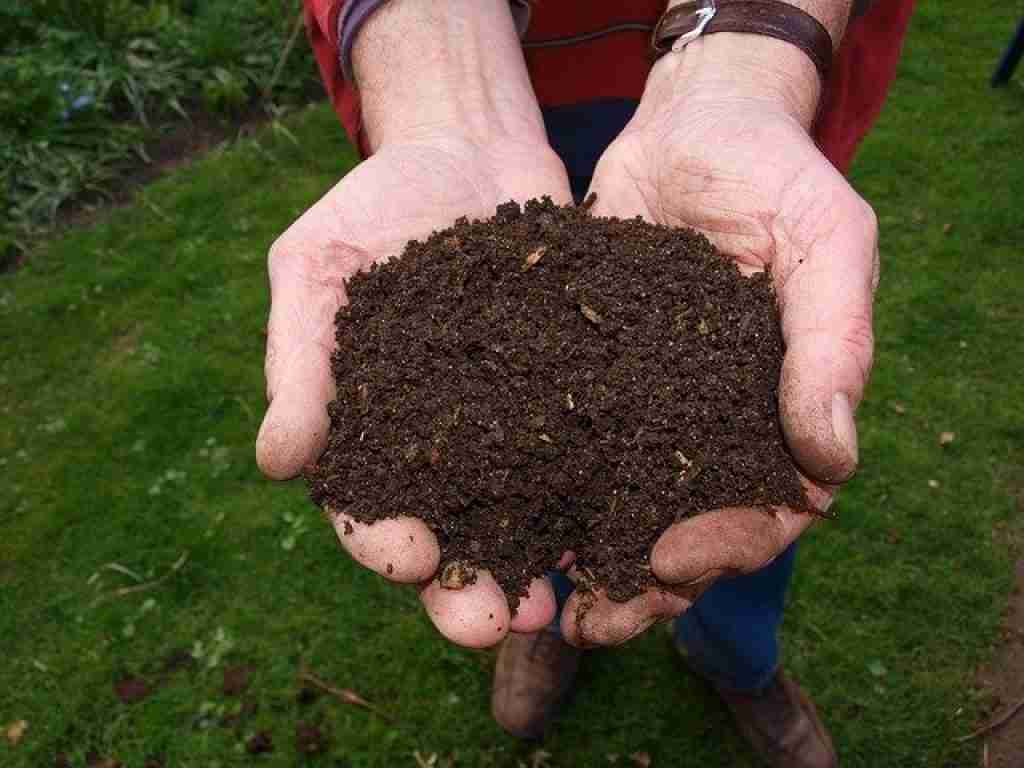Compost is sometimes referred to as ‘black gold’. Why? Because it is the best thing you can add to your soil. While other amendments only solve one or two issues, compost has enormous benefits that build the soil, increase water retention, and feeds the plants. Knowing how to mix compost into soil is a massive boost to your garden.
What is compost
Compost is composed of decayed organic matter and contains an enormous amount of beneficial organisms that feed your soil. There are many different sources of compost that will have their own particular pros and cons.
You can source compost from decomposed farm animal manure, worm castings, or a traditional compost heap. Compost can be purchased in bags at garden centers or you can make your own at home using food scraps. Different composting systems can be adapted to all living conditions from small apartments to country homes. This diversity of sources and composting systems makes it a safe, accessible, and free (in some cases) source of fertilizer.
Procedures for adding compost vary depending on the situation, growing conditions, and soil type. So knowing why and how to mix compost into the soil will help you manage your garden much better. Make sure to keep reading to learn how you should be using compost in your garden.
Why add compost to the soil?
Gardeners add compost to the soil because it contains vital nutrients that feed the plants, increases soil water retention, and corrects poor soils with a lot of clay or sand.
It is a source of natural and organic fertilizer for your plants. Organic matter is made up of essential nutrients like nitrogen that plants need to grow. When organic matter decays, microorganisms break it down and release nutrients to plants.
Organic matter acts like a sponge and is one of the best ways to increase soil water retention. Coincidentally, compost is made up entirely of organic matter. So when you hear someone suggest adding organic matter to the soil, what they mean is that you can add compost to the soil.
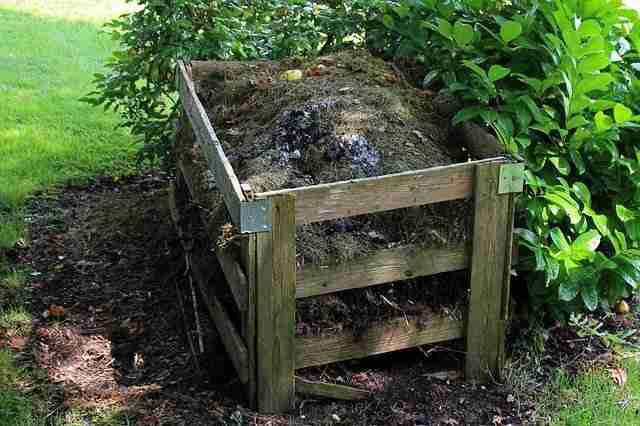
Compost is also a soil amendment that can drastically improve difficult clay or sandy soils. Poor soils like these need to be amended with organic matter. Compost is the source of organic matter that will show improvements in the soil the quickest.
Now that you know why compost is added to the soil, let’s get into the specifics of how this benefits you as a gardener.
What are the benefits of adding compost to soil?
Adding compost to the soil increases water retention, builds healthier soil, and feeds the plants. These three reasons are the direct effects of adding compost to your soil. But these three factors, however, influence a whole slew of reactions that leads to a healthier garden in general. Healthy gardens are more resistant to droughts, pests, and diseases.
When you’re working in a healthy garden, there is much less work to do and much more produce to enjoy. Imagine spending your afternoon plopping cherry tomatoes in your mouth instead of pulling your hair out trying to figure out why the tomato leaves are turning yellow.
How much compost should I add to soil?
How much compost you should add to your soil depends on what type of soil you’re originally starting off with and what type of compost you have available to you.
If you have healthy soil, then you only need to add in 1 or 2 inches of fully decomposed compost before each growing season. This basically just ‘tops off’ the organic matter that would have decomposed over the year and sets you up for a fresh season of planting.
Difficult soils
Should you have difficult soils that are high in sand or clay, you’ll want to add a lot more compost to amend it. You can start by adding between 3 to 5 inches of compost. But how much depends on the conditions of your soil and the type of compost you’re using.
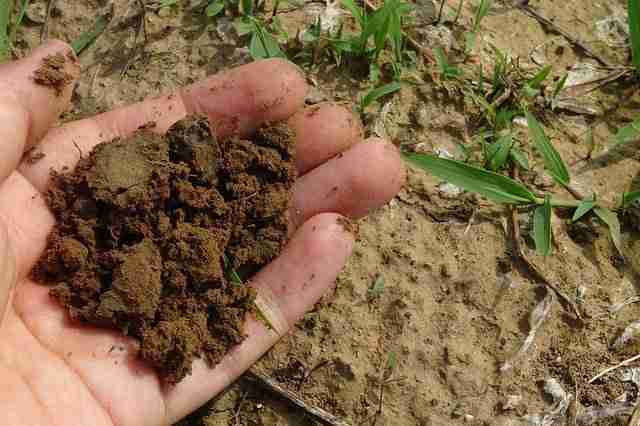
Keep in mind that not all compost is created equal. Composted manure, for example, will be very high in nitrogen and you can easily burn your plants by putting too much. Compost that hasn’t yet broken down completely can sometimes take up nitrogen to help with decomposition, so it will take a season to become available to your plants.
How to mix compost into soil
How to mix compost into the soil depends on the size of the land you’re working on and the quality of your soil.
First, take a look at your soil and figure out its structure. Is it primarily clay, sand, or loam? Based on this, you might realize that you don’t even need to mix compost into the soil.
Disrupting soil damages the microrhyzal networks, kills insect life, and inverts the soil layers. For this reason, I don’t normally recommend churning the soil too much. However, compost offers so many benefits to the soil that it offsets the harm of turning over the land. But if you can save yourself work and reduce disturbing the soil, why not?
Loam soil
Loamy soil that can easily be worked and is already in good condition doesn’t need to be amended very much. So instead of turning the soil to mix in the compost, it is perfectly fine to spread the compost over the top.
With time, as it rains and earthworms aerate the soil it will naturally mix into the soil. Using compost this way also allows it to work as mulch and inhibits weeds from sprouting. If you want to go the extra mile, you can use a simple garden rake to smooth it over the surface.
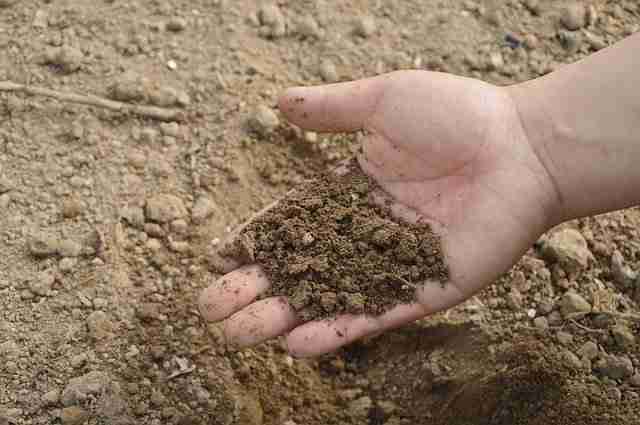
Spreading compost over the top of the soil also works great if you already have things planted. Having things in the ground makes it logistically impossible to mix in the compost without disturbing the already established roots. Just make sure to spread the compost a few inches away from the plant stems to avoid burning the young plants.
Clay soil
Now let’s say you are working with more challenging soils that are high in clay or sand, it is important to incorporate compost into the soil in order to amend the soil structure. Letting it naturally work its way into the soil would be impractical and take too much time. How you work the compost in, however, will depend entirely on the size of the plot and whether it is a new garden bed or not.
If you’re starting a new bed from scratch, mixing compost into the soil will be more involved. My favorite way of starting a bed is by double digging. While this method is the best for increasing your topsoil and incorporating compost and other amendments while preserving the soil levels, it is back-breaking work.
Use a cultivator
If you’re working on a space larger than a small garden, you might want to consider a hand or machine-operated tiller. For personal gardens, hand-operated tillers that don’t go too deep will work just fine.
Now, what if you’ve already been cultivating a bed? In theory, beds that have been previously cultivated should be in pretty good conditions because you’ve been feeding and building the soil. As I mentioned before, garden beds with soil don’t need the compost mixed in.
But if your soils have suffered from years of being over-tilled or left uncovered under the hot sun, you might be working with challenging terrain. If this is the case, you need to regenerate your soil by mixing in lots of compost. When you don’t have to work through acres of land, use a broadfork to mix in the compost without disturbing the soil even more.
Just make sure to use blades that don’t cut in too deep. Also, make a plan so that once you’ve tilled you don’t leave the soil exposed. You can cover it with a green manure crop (also called cover crops), for example.
Which plants benefit most from adding compost to soil?
Almost all plants benefit from adding compost to the soil. Especially those fruiting vegetables which require heavy fertilizing – like tomatoes.
Other plants, like spinach, can quickly become overfertilized. Overfertilised plants that are getting too much nitrogen will lower quality and harvest. This happens most often with conventional fertilizers but in rare cases, it can also happen with compost.
If you have a vegetable garden going, adding compost between each growing season is a great idea. To avoid over-fertilizing other crops that don’t need so many nutrients, try a crop rotation strategy. This will allow you to plant things like spinach after the tomatoes have already taken advantage of the bulk of nutrients.
Caution with seedlings
Be careful when adding compost to small plants or when starting seedlings. Composted material that is high in nitrogen, like animal manure, can burn the plant’s sensitive roots if it hasn’t decomposed in time. So adding compost to the soil when the plants are mature and they’re getting ready to start giving fruit, is a good idea.
I would also like to note that some plants have evolved to be extremely tolerant of poor, sandy soils with little to no organic matter. Plants like this are normally limited to wild cultivars but also include plants like lavender and St. Johns Wort, which will react poorly if you add compost to their soil.
What type of compost should I use?
Not all compost is created equal and depending on what plants you are growing, you might want to consider different sources of compost. You’ll want to consider the individual needs of the plant and what growing behaviour you want to encourage. When thinking about what compost to use, consider the ratio of Nitrogen, phosphorus, and potassium (NPK) and how they contribute to plant development.
Nitrogen contributes to chlorophyll production, which allows the plant to capture energy from the sun and use it to grow. Its primary function in the plant is growing and it will promote big and lush foliage. If you want plants with a lot of leaves, opt for a compost that is high in nitrogen.
Phosphorus is primarily involved with nutrient cycling inside the plant. This affects the ability to photosynthesize and ultimately relates to the plants ability to put out flowers and fruit. If you’re looking to grow plants for the fruit, make sure they get plenty of phosphorus.
Potassium is the last key nutrient and affects the movement of water and nutrients in the plant. Without potassium, plants develop skinny little stems that snap under pressure and are less resistant to periods of drought.
Animal manure
At the garden centre, you can inspect the compost packaging to choose which is better for your needs. Decomposed animal manure has the highest ratio of nitrogen while worm castings have the greatest balance between the three macro-nutrients.
Worm castings
My favourite source of compost is worm castings. They provide the most balanced mix of nutrients and a whole host of beneficial microorganisms. Worm composting systems can easily be integrated into even the smallest apartment and break down organic matter much faster than hot composting.
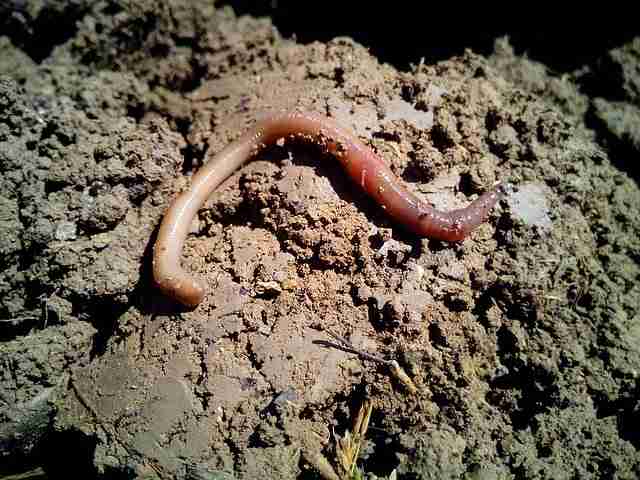
The downside is that it is usually more expensive and it is hard to make enough worm compost to cover many acres of land. If you’re gardening in large spaces, ask farmers in your area for their manure. Just make sure to let it age completely or the high ratio of nitrogen will burn your plants.
Do I need to renew the soil compost mix
Yes, you’ll have to renew your soil compost mix once or twice a year. Over time, microorganisms will break down the organic matter to release nutrients. Just like when we eat we need to replenish the fridge, plants need their food to be replenished as well.
Depending on what crops you’re growing and the conditions of the soil, you might have to add in more soil several times throughout the year. But in general, it’s good practice to renew the soil compost mix at least once a year in the spring. Adding compost again in the autumn is up to your own judgment.
In my garden, I rely on a mix of strategies for building up the soil. This means that I do one big amendment with compost in the spring to get ready for all the summer fruiting vegetables. Then I do small applications as needed throughout the year.
Conclusion
Mixing compost into your soil is basically always a good idea. Adding compost builds healthy soil, increases beneficial microbial life, retains more water, and provides essential nutrients for the plants. Compost is also extremely versatile. From fertilizer to soil amendment and mulch, it helps solve many problems in the garden.
Knowing how to incorporate compost into the soil will help you maximize the advantages of compost. Adding a few inches of good-quality aged compost in the spring will set you up for success for the rest of the year.
Whether you make your own compost or buy it from the store, there is an accessible option for everyone. So ditch the synthetic fertilizers and go all in on the compost!

